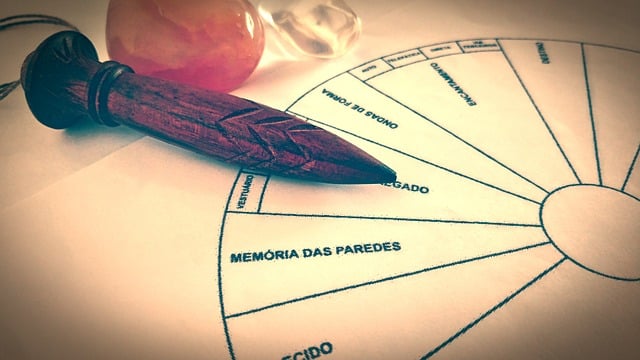
Dowsing is a practice that promises the amplification of human perception using, for example, a pendulum.
The Royal Spanish Academy ( RAE ) defines dowsing as a particular sensitivity for capturing certain radiation . Thus, thanks to dowsing, it would be possible to detect an underground spring or other hidden things.
A pseudoscience
Also called rhabdomancy or dowsing , dowsing is often considered a pseudoscience . In any case, those who maintain the existence of this property assure that, with the use of rods , pendulums and other simple devices that are placed in suspension, it is possible to amplify human sensitivity and thus perceive the radiation of an emitting object.
Anyone who claims that they can detect electromagnetic disturbances with these simple instruments is known as a dowser . According to these individuals, the spontaneous movement of the pendulums or rods when held in the hand reveals the changes.
The use of dowsing to discover underground water dates back thousands of years. This application was based on the belief that there were emanations detected by the tools , which moved due to this supposed radiation.
Throughout history , through dowsing, attempts have been made to find minerals and water, diagnose diseases, measure things accurately, inventory natural resources, predict changes in the state of organic matter, find foci of energy radiation, guess numerical values and even find missing individuals. However, no scientific tests could prove the effectiveness of the method.
Basics
The author William Pryce explained in his work Mineralogia Cornubiensis , from 1778, that the rods used for dowsing were affected on a physical level by the emanations of the substance that the dowser was looking for. This explanation was the most common at the beginning of this practice. Many people throughout history relied on these principles with a sincere conviction that they were amplifying their perception, without caring about scientific rigor, something as acceptable as any other personal belief.
But given the business that many have turned this and other apparently paranormal techniques into, an exhaustive look was necessary to verify their validity. In the English magazine Nature , one of the most important magazines of scientific interest worldwide, we found dowsing in an issue from 1986 as one of the supposedly paranormal effects but which may be nothing more than a combination of expectations, prior knowledge and probability. .
On the other hand, we must talk about the concept of the ideomotor effect , a phenomenon belonging to the field of psychology that is seen when we make unconscious movements automatically due to a particular stimulus. There are those who believe that this is the explanation for what takes place during dowsing sessions, instead of the supposed amplification of perception that experts point out.
As with other similar practices, dowsing has gone through different experiments conducted by people who, believers or not, intended to give dowsers the opportunity to demonstrate to the world the validity of its foundations . However, this has never happened.

Despite its age, dowsing has not yet been supported by science.
Quackery
Despite the lack of certainty, dowsing continues to be spread by subjects who proclaim themselves specialists and defended by those who trust in its validity. Therefore, in many cases, dowsing is constituted as a lucrative activity and the basis of a business .
This gives the practice a bad name, something similar to what happens with cartomancy, clairvoyance and contact with spirits; Although none of them have been proven by science, the use made of them by charlatans destroys the interest of those people who would otherwise have given them at least a chance.
